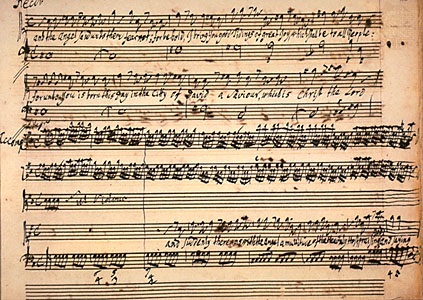Rhythm - The Bain of my Existence…and the Essence of it.
We have shifted our focus in our Lectures now, to the next segment, which is Rhythm. I am excited by this and afraid, all at once! I can count the music that I work within, at a pretty good level, but have now been fully pulled out of my comfort zone! To date, my greatest challenge has been to count and properly execute a Hemiola when the piano is doing one thing and the singer must do the other...the old "2 against 3" gets me every time... it wasn't until I figured out that the 2 part must be 'square', that I could actually separate what I was feeling in the rhythm of the piano, from what I must do with my voice. I do remember a particularly difficult entrance in Puccini's 'Gianni Schicchi' wherein the time signature changed 3 times within a four bar span... There is that old brain/music connection again!
I understand simple meters and definitely grasp the time signature standard, in that the top number denotes how many beats to a bar, and the bottom number tells us which note to give the value of 1 beat to. Okay, that sounds pretty easy! I even understand, (and love!) compound meters, what fun! Having recently sung Handel's "Rejoice Greatly" in 12/8 time was a joy ~ it is much more like a dance, almost a jig and quite a lot more fun than the one we hear all the time in 4/4 meter. I get this, I love it, I can do it.
Now, put me into a class where I am suddenly listening to all natures of World Music and ask me to find the meter of a snippet of music that has a complex beat such as a count of 7 or 10...well I can feel the jive and follow along with it but it will take some doing to train my ear to find the actual time signature. Thankfully, there are oodles of practise clips on the moodle for us to test ourselves with.
There are a lot of tips and tricks that we'll learn, I'm sure, as our Professor and TA's will take us through some exercises. I know also, that in order to decipher the meter, it's best to employ a broken down process of finding the slower beat or base beat and clapping to this for a few bars. Next, listen for the drums or percussion, which are a wonderful guide to help us find the stresses, and which are most likely at the beginning of each bar. Finally, the patterns in the melody are helpful too. In fact, once our beat is established, the melody might very well be what solidifies the entire thing. I promise to work at this!
Now the learning curve for me will be much steeper. In under 5 weeks, we are past the Rudiments of Music and beginning to look much more deeply into the complexity of music.
The Prof suggested that we listen to Wagner's Prelude to Tristan und Isolde, which has a lot of tempi or beat changes within in, in terms of the freedom of the meter. Even the points in which it seems to stop can very much change the feeling of the beat. This opera is notable for Wagner's unprecedented use of chromaticism, tonal ambiguity, orchestral colour and harmony suspension. Well, since the only Wagner Opera I've ever sat through was Parsifal, I shall have to tune into this one now. Goodness, where I will find time to listen to a 5 hour opera? I shall have to satisfy myself with the Prelude.
Speaking of Preludes, and why this was mentioned, is that we began our plunge into rhythm by discussing the origins of the Prelude itself. A Prelude is a musical composition that is usually brief, and is played as an introduction to a larger piece. The roots of the Prelude can likely be traced back to musicians who were warming up prior to a performance. The warmup became part of what the audience would obviously hear, so they began to have rhythm and tonality to them as well, so that the audience would have something pleasing to listen to, instead of meaningless noises. Arpeggios are often something that is used during a warmup. The Baroque (1600-1750) and Classical/Romantic (1750-1800) eras were the ones wherein a Prelude became a formal part of a collection of musical numbers.
A pulse or beat is the mainstay of any music, even the music that seems to feel like it has no beat...does surely have a beat. It's really the essence of life itself, found in our heartbeats, our breathing patterns, our walking rhythms. The pulse can be explicit and very obvious, but it can also be 'implied', within the texture of the music. It really is the foundation on which we measure our music. (Hence, our music is divided, mathematically, into bars, also called measures.) The rate at which the pulse moves is the tempo. Andiamo!

Latest comments
This is STILL a perfect description of the worst president of the USA ever.
Keep sharing like this more with all of us.
I really like the stuff which ahds hared herea bout this place. I will try to go there after taking the tour by http://www.goldenbustours.com/.
My dear Kira, your poignant words touched me deeply. To know that you were treated like this is just unbelievable. Thank you for sharing.